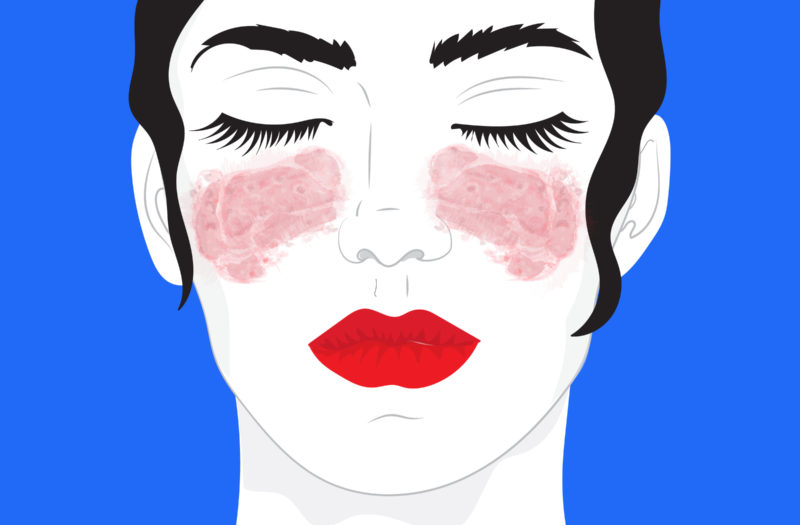

Key Takeaways
- Many people with lupus are sun-sensitive, but there’s no proof that sun exposure causes lupus for those who don’t already have it.
- Women with lupus who’ve had a lot of UV exposure are more apt to present with a butterfly rash at the time of their diagnosis.
Many people with lupus are photosensitive, meaning that their symptoms get worse as a result of sun exposure. About one-third of lupus patients have this problem; some end up with a butterfly-shaped rash across their nose and cheeks, or find that a rash they have gets worse. If you’re among the sun-sensitive, getting too many rays may also trigger other lupus symptoms, such as joint pain and fever.
Lupus is an autoimmune disease that can impact almost any organ in the body. While it often impacts the skin and joints, lupus-related inflammation also often causes pain and swelling that can damage the heart, lungs, brain, and kidneys.
While doctors have long known about the connection between sun exposure and symptom flare-ups in lupus, what hasn’t been clear is whether getting a lot of sun can actually trigger the disease in the first place. Fortunately, a new study suggests that it’s unlikely.
The research, which was published in Arthritis Care & Research, was based on data from the large Nurses’ Health Study I and II, which together contain data on nearly 250,000 women who were surveyed over a period of many years. For purposes of this new study, researchers focused on participants who had been diagnosed with systemic lupus erythematosus (SLE), the most common form of lupus.
To assess sun exposure, researchers estimated “ambient UV exposure” by relying on data about where the participants lived. They used a scientific model that uses factors, such as cloud cover, elevation, latitude, and ozone in each area, to predict typical UV exposure for people who reside in a given area.
According to their findings, UV exposure was not associated with a higher risk of being diagnosed with SLE. However, the researchers determined that women who had the most ambient UV exposure who were diagnosed with lupus were more likely than others to have a butterfly-shaped rash (malar rash) at the time of their diagnosis. This led them to conclude that “UV exposure may trigger SLE onset with malar rash among susceptible women.”
The researchers noted that although they “found no overall association between high UV radiation exposure and risk of overall SLE,” those who got the most UV radiation had a “non-significant” increase in their chances of being diagnosed with certain subsets of SLE, including skin involvement in the form of a malar rash. Therefore, it is still “biologically plausible” that UV exposure plays some role in triggering lupus, they explained.
A malar rash, more commonly known as a butterfly rash, is a well-known symptom of lupus. This reddish rash might be flat or raised, and it spans the bridge of the nose and cheeks. A malar rash may also be a sign of a vitamin deficiency or of a skin condition such as rosacea.
What This Means for You
If you don’t have lupus, there’s no need to worry that sun exposure will cause you to develop it (but it’s still smart to wear sunscreen).
If you get a butterfly-shaped rash over your cheeks and nose, don’t assume you’re just sunburned; it could be a sign of lupus or another condition that requires treatment. Some people with lupus find that sunlight triggers a flare, but two-thirds of patients don’t have this problem. If you have antibodies to Ro and La (SSA and), you’re more apt to be sun-sensitive.
Be Part of Research with ArthritisPower
Join CreakyJoints’ patient-centered research registry and participate in voluntary studies about managing arthritis. Learn more and sign up here.
Barbhaiya, M, et al. “Association of Ultraviolet‐B Radiation and Risk of SLE among Women in the Nurses’ Health Studies.” Arthritis Care & Research. June 2022. doi: https://doi.org/10.1002/acr.24974.
Does Sunlight Trigger Lupus? MedPage Today. https://www.medpagetoday.com/rheumatology/lupus/99361.
Lockshin, M. Lupus & Sun Sensitivity: What You Need to Know. https://www.hss.edu/playbook/lupus-sun-sensitivity-what-you-need-to-know.
National Library of Medicine. Malar Rash. https://www.ncbi.nlm.nih.gov/books/NBK555981.





